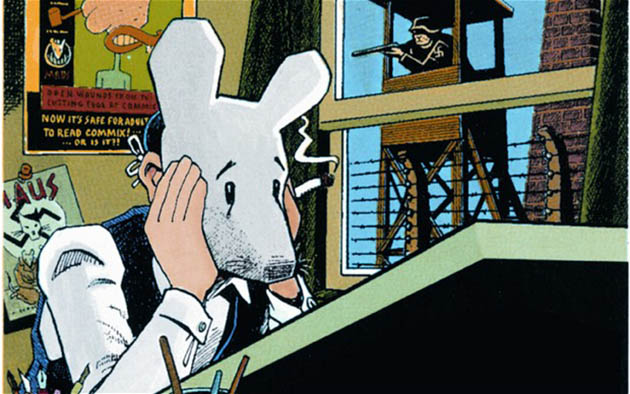
Zig and Wikki turn out to be tiny: the first “pet” they attempt to catch is a fly – until it gets eaten by a dragonfly. But while they’re here, they decide to do their science homework and find a pet. Zig and Wikki are alien kids who land on earth by mistake. When the evil Saw-Jaw threatens the city, the two are too busy fighting over whose powers are better to deal with Saw-Jaw, but eventually they learn to work together. Their mom turns it into two costumes, but then each of them only inherits half of the superpowers. Mo and Jo is a story of sibling rivalry: Mona and Joey are twins who get a superhero costume, but in fighting over it they tear it in half. Two others that I’ve read are Mo and Jo: Fighting Together and Zig and Wikki in Something Ate My Homework. Jenny Williams mentioned Otto’s Orange Day in her post about comics for kids. There are a number of books for slightly older kids, too. There’s little dialogue, and not a lot of conflict or plot to deal with - mostly it’s just very brief vignettes starring Lilly in each of the four seasons. The illustrations are reminiscent of older comics and look like early-20th-century comics (think Little Nemo in Slumberland). The book uses its horizontal format to incorporate four panels on each spread, and the effect is very much like reading a newspaper comic strip but bigger. Silly Lilly and the Four Seasons is quite short, kind of like a giant comic strip. Spiegelman’s own Jack and the Box is one of the books targeted for “brand-new readers,” along with Agnes Rosenthiehl’s Silly Lilly books. These are comics-format books intended for younger readers, some designed for the very young and some for middle-grade readers. Well, Spiegelman and Mouly have continued publishing comics that aren’t just for grown-ups with their Little Lit Library in the form of Toon Books. The tag line on the back was “Comics - they’re not just for grown-ups anymore!” It’s funny, because at the time that Spiegelman’s Maus was published (also in 1986), it seemed that just the opposite was needed: “Comics - they’re not just for kids anymore!”

I remember first coming across the Little Lit books compiled by Art Spiegelman and Françoise Mouly a few years ago: they’re collections of comics stories by various artists on a theme: fairy tales, weird tales, etc. More and more comics appeared on the scene that were decidedly not for kids. In the mid-’80s, with Frank Miller’s The Dark Knight Returns and Moore and Gibbons’ Watchmen, the world of comics started getting more mature … and a lot darker. Then Superman came along and people came to think of comics as mostly superhero stories, aimed mostly at teenage boys.

When comics first became widespread, they were kid-friendly (though not always targeted only at kids) and were just there to help sell newspapers. It’s funny thinking about how comics have evolved for different audiences.


 0 kommentar(er)
0 kommentar(er)
